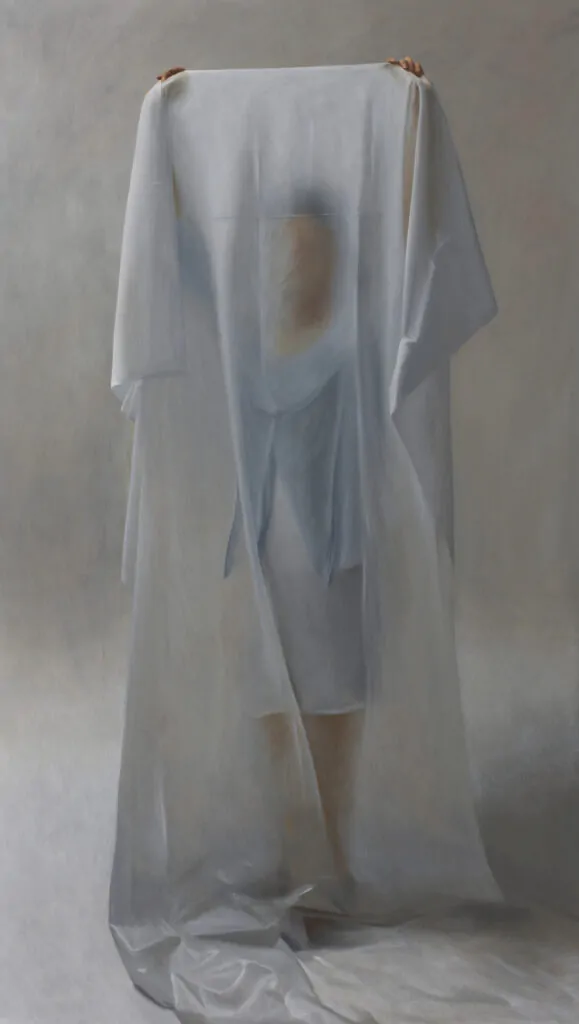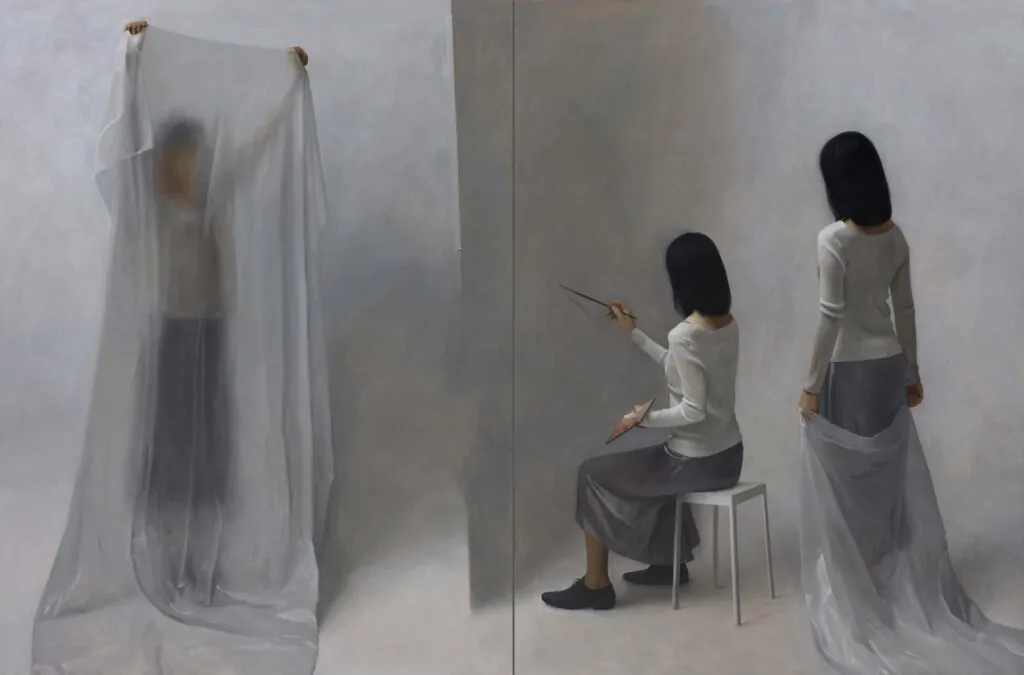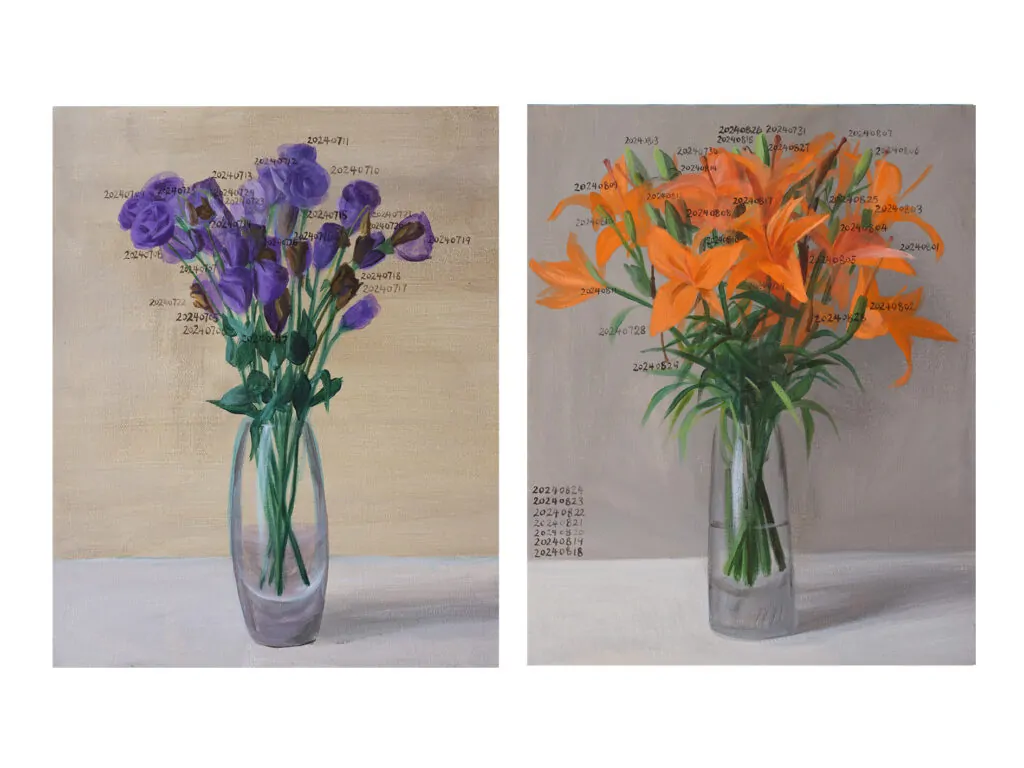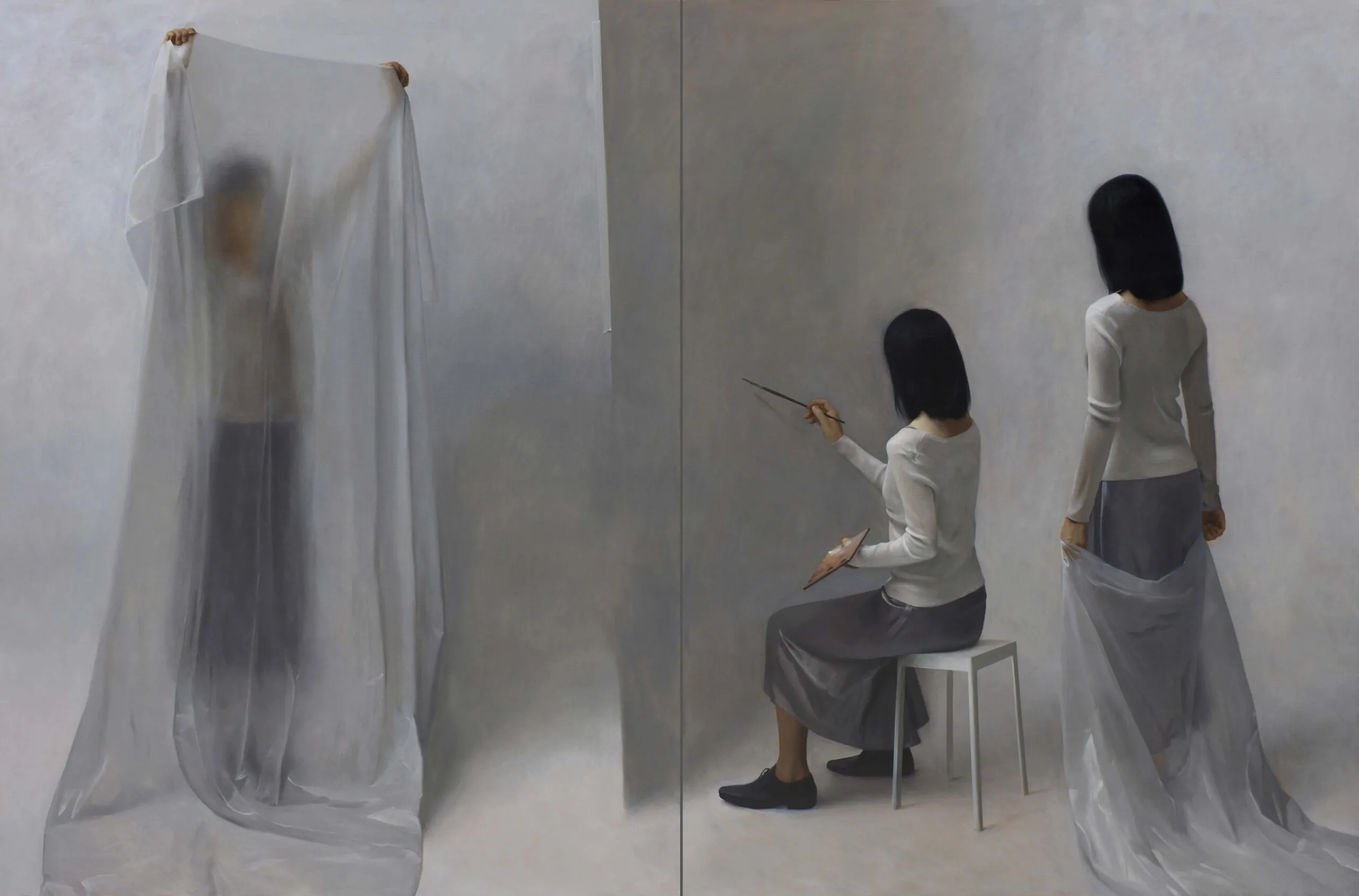Xue Ruozhe: Chronoscape
10th October, 2024 – 23rd November, 2024
Gallery Rosenfeld
37 Rathbone Street
London
W1T 1NZ
This exhibition accentuates Ruozhe Xue’s ongoing musings on painting as an inherently time-based medium. For them, ‘time is not only embedded in the image but also in the very materiality of the painting. Each brushstroke is made at a different moment, and on the completed surface, we can see the traces of all these moments through the brushstrokes and overlapping layers of colour, revealing the passage of time on the canvas.’
The nature of painting as a palimpsest of time, layered through accumulation, is best captured in Xue’s lifelong series ‘YYYY-MM-DD.’ Each day, Xue sets up their easel before a vase of flowers, selects a bloom, paints it, and marks the date. They paint one flower a day until the entire vase is complete, then starts over with a fresh bouquet. This ritual remains unbroken, with each stroke and colour forming a fleeting yet indexical dialogue between the artist and the still life. To keep this routine uninterrupted, they chose a canvas size that fits into a suitcase, allowing them to carry it wherever they go. ‘YYYY-MM-DD’ began on the day their youngest daughter was born and will continue for the rest of their life.

The Imagined Imagery, 2024
Oil on linen
230×130 cm
Image courtesy of the artist and Gallery Rosenfeld
Each painting in this still life series can be seen as a chronoscape that maps the artist’s cyclical daily routine locked within a grid-like structure. As a lifework, Xue’s diligent daily labour registers an utterly unheroic, minuscule activity onto something as vast as the longue durée or eternity. Rather than simply reflecting an ethics of slowness in our fast evolving, information-saturated world, these recurrent painting rituals act as a coping mechanism for navigating the uncertainties of the post-COVID times.
At times, Xue’s painting reflects on its own modus operandi by weaving itself into a web of inter-references with other works. A bunch of orange lilies from the still life series reappears in a coldly lit, minimalist studio setting in My Studio-based Practice. A young woman in black paints at her canvas, but while the lilies bloom before her, they have already withered in her painting. The scene of production is nod to Vermeer’s allegory The Art of Painting. And yet, the analepsis in the pictorial narrative not only generates a sense of enigma but also self-reflexively prompts a metapictorial reflection on the still life genre. ‘Nature morte,’ or ‘dead nature’ in French, still life is a remove from nature, laid upon the tabletop within the mortal sphere of human existence. It becomes a vanitas,
speaking to life’s transience.

The Misplaced Studio, 2024
Image courtesy of the artist and Gallery Rosenfeld
Another layer of enigma arises from the gender disjunction between the creator depicted and the artist, who uses the self-referential first person pronoun in the title to assert that the figure in the painting represents themselves. Art historian Victor Stoichita’s observation that the production scene in the third person necessarily requires the staging of a split self by resorting to ‘the scene of self-production with a fictive author’ is at play here. Xue’s authorial self-scission evokes Arthur Rimbaud’s famous line ‘Je est un autre’ (I is someone else) from his May 1871 letter on the self as other. ‘I paint myself as if I were painting another’ summarises the artist’s autobiography in the third person, freeing the authorial self from the matrix of identity determinants.
The hierarchy between the author, the model, and the simulacrum further collapses in The Misplaced Studio. The rift in time is subtly captured through the presence of three identical figures co-existing in different, slightly distorted pictorial spaces, suggested by the painted tape that connects them as a trompe l’oeil device. The translucent white cloth, traditionally used in studio practice to create the mise-en-scène, is now employed to block the viewer’s gaze from the figure behind it. The veil alludes to the first metapainting in the history of art, as recounted in Pliny’s Natural History, which describes the legendary competition between the Greek painters Zeuxis and Parrhasius. In their contest, Zeuxis
painted grapes so lifelike that birds tried to eat them. Confident, he asked Parrhasius to unveil his work, only to realise that the ‘curtain’ covering it was the painting itself.

20240705-20240829, 2024
Image courtesy of the artist and Gallery Rosenfeld
Parrhasius’s trompe l’oeil painting par excellence, which presents itself as a fictive reality, is translated into a void in The Misplaced Studio. The misplaced space allegorises the studio as a charged, fictive space with no indexical bearing on reality. The correlation between time and space is severed. Thus, as if pieced together through cutting, editing, and pasting—techniques commonly used in video and other time-based media that have long been integral to the artist’s practice—the triplegangers drift in an endless, open space for interpretation.
Xue Ruozhe: Chronoscape opens on the 10th of October, 2024 until the 23rd of November, 2024 at Gallery Rosenfeld
©2024 Gallery Rosenfeld, Sophie Guo





